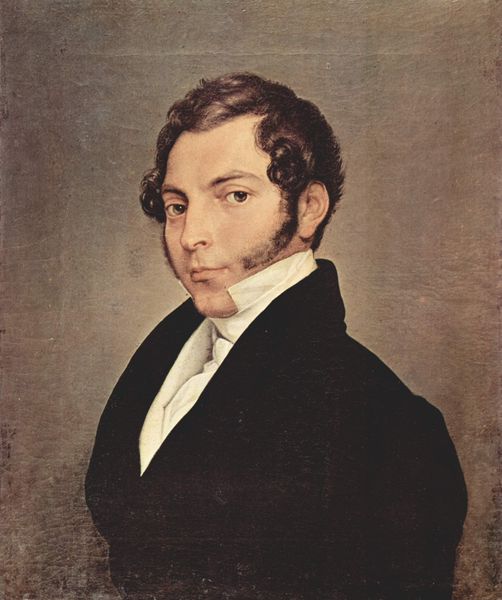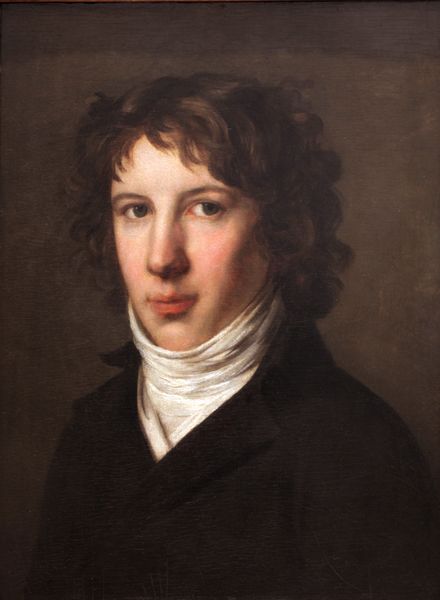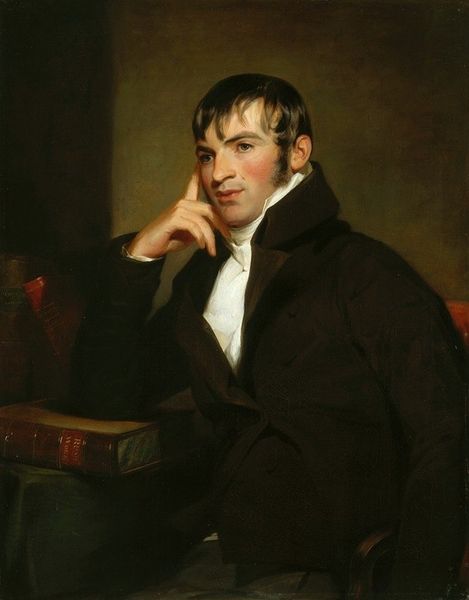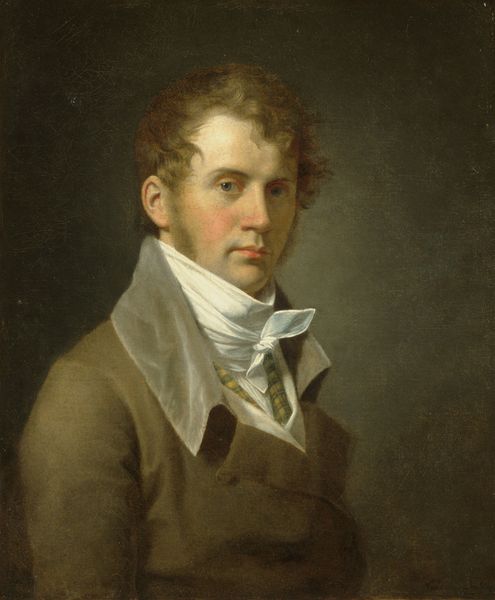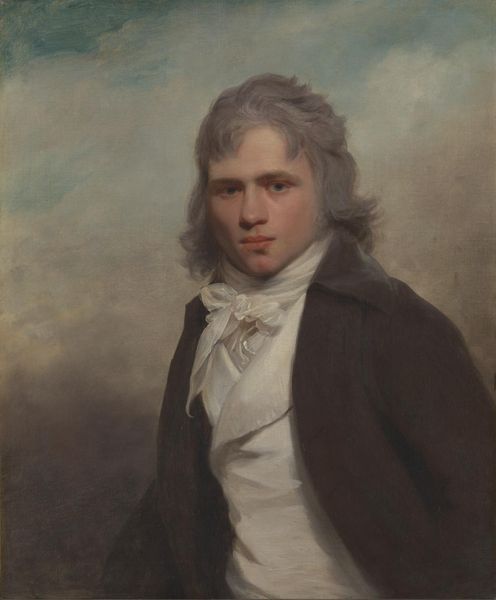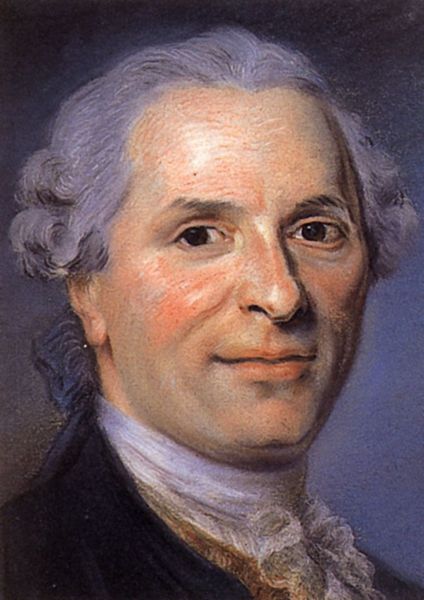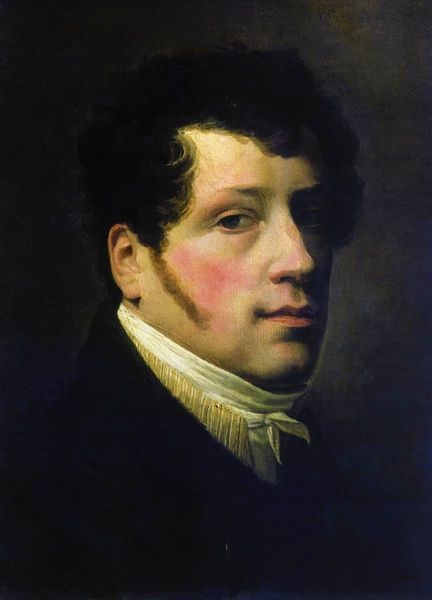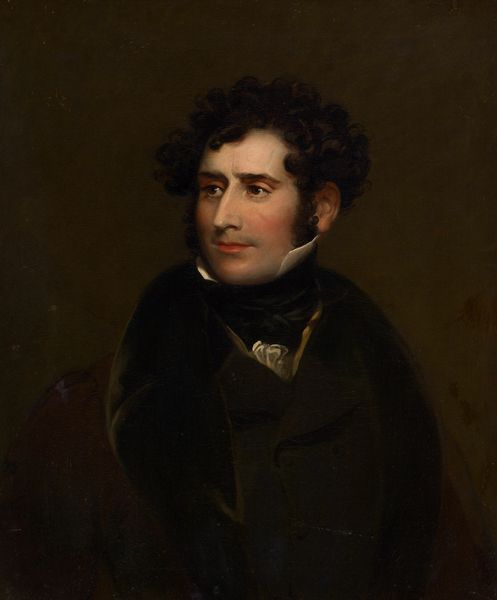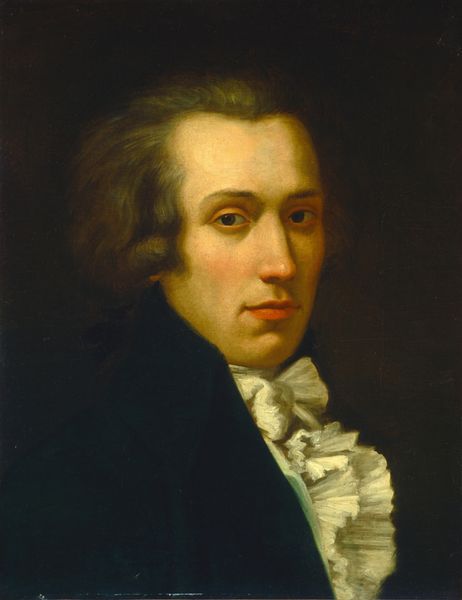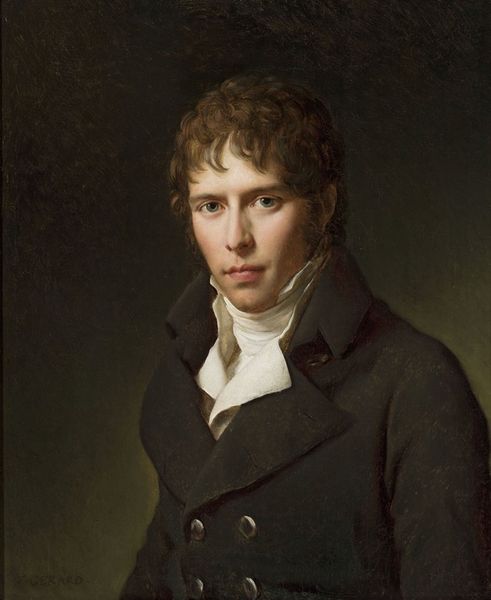
painting, oil-paint
#
portrait
#
neoclacissism
#
portrait
#
painting
#
oil-paint
#
romanticism
#
history-painting
#
academic-art
Copyright: Public Domain: Artvee
Jean Auguste Dominique Ingres painted this portrait of Jean-Marie-Joseph Ingres, likely in the early 19th century, using oil on canvas. Notice the portrait’s tight composition, the subject's face dominates, framed by the dark backdrop and his dark jacket. The artist’s meticulous brushwork creates a smooth, almost porcelain-like texture on the face, contrasting with the softer treatment of the hair and clothing. The colour palette is restrained, with muted tones enhancing the sitter's contemplative mood. Ingres’s classical training is apparent in the balanced structure and idealized portrayal. But how does this relate to broader artistic and philosophical concerns? Ingres was working at a time when artists were grappling with ideas about representation and reality. By emphasizing structure and form, Ingres invites us to look beyond the surface and consider the underlying principles that give shape to our world. Consider how the smooth surface and balanced composition invite a sense of harmony and order. These qualities are not just aesthetic choices; they are part of a larger cultural discourse about beauty, truth, and the role of art in society.
Comments
No comments
Be the first to comment and join the conversation on the ultimate creative platform.
